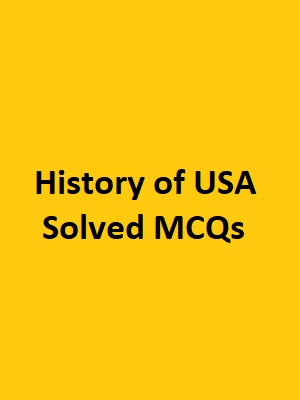1. The Law
which deals with eradication of corruption and corrupt practices and holding
accountability of all those persons accused of such practices and matters
ancillary is called
A. Anti Corruption Act B. National Accountability
Ordinance
C. Public
Account
Ordinance D. None of above
Answer:
Option B
2. National
Accountability
Ordinance, ws
promulgated in
A. 1997 B. 1998
C. 1999 D. None of above
Answer:
Option C
3. National
Accountability
Ordinance, 1999 contains ______ sections
A. 33 B. 35
C. 37 D. None of above
Answer:
Option C
4. National
Accountability Ordinance, 1999 contains______ schedule
A. 1 B. 2
C.3 D. None
of above
Answer:
Option A
5. National
Accountability Ordinance, came into force from
A. January, 1984 B. January, 1985
C. January, 1986 D. None of above
Answer:
Option B
6. Section
3, of the National Accountability Ordinance empowered the Ordinance to
A. Obey other existing laws B. Override
other laws
C. To repeal other laws D. None of above
Answer:
Option B
7. Section
4 of the National Accountability Ordinance, 1999 deals with
A. Application of Ordinance B. Enactment
of Ordinance
C. Amendment of Ordinance D. All of above
Answer:
Option A
8. National
Accountability Ordinance, 1999 extends to
A. Whole of Pakistan B. Specific areas of Pakistan
C. Foreign areas of Pakistan D. None
of above
Answer:
Option A
9. Section
5(a) of the National Accountability Ordinance, 1999 defines
A. Accused B. Court
C. Government D. All of above
Answer:
Option A
10. As per
section 5(b) of the National Accountability Ordinance, 1999 appropriate
Government means
A. Federal Government B. Provincial Government
C. Both (a) and (b) D. None of above
Answer:
Option C
11. Section
5(c) of the National Accountability Ordinance, 1999 deals with definition of
A. Local Government B. Assets
C. Associates D. None of above
Answer:
Option B
12. Any
property owned, controlled by or belonging to any accused, whether directly or
indirectly is called
A. Case property B. Assets
C. Both (a) and (b) D. None of above
Answer:
Option B
13. Section
59d) of National Accountability Ordinance defines
A. Associates B. Account
C. Court D. None of above
Answer:
Option A
14. Any
person who is or has been managing the affairs of or keeping accounts for the
accused or who enjoys or has enjoyed any benefit from the assets is
A. Associate B. Coordinator
C. Partner D. All of above
Answer:
Option A
15. Any
person who ostensibly holds or is in possession or custody of any property of
an accused on his behalf for the benefit and enjoyment of the accused is called
A. Ostensible owners B. Benamidar
C. Both (a) and (b) D. None of above
Answer:
Option C
16. The
word "benami"
is ______ term
A. Latin B. Persian
C. French D. None of above
Answer:
Option B
17. Section
5, clause (e) of the National Accountability Ordinance deals with
A. Chairman National Accountability Bureau B. Conciliation
Committee
C. Court D. None of above
Answer:
Option A
18. As per
section 5(f) of the National Accountability Ordinance, 1999 "Code" means
A. Pakistan Penal Code B. Code of Criminal
Procedure, 1898
C. Both (a) and (b) D. None of above
Answer:
Option B
19. Conciliation
Committee means the Conciliation Committee constituted under section
A. 20 of the National Accountability Ordinance,
1999 B. 25
of the National Accountability Ordinance, 1999
C. 25A of the National Accountability Ordinance,
1999 D. None
of above
Answer:
Option A
20. The
section dealing with Deputy Chairman, National Accountability Bureau is
A. 6(d) B. 7
C. 7-A D. None of above
Answer:
Option B



0 Comments